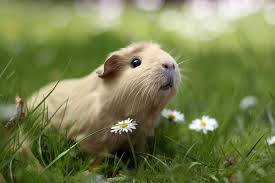Guinea pigs in the classroom? Sound crazy? I have to admit I first thought so... but this amazing teacher has convinced me of the value of animal therapy and I've even started using guinea pigs regularly in sessions at my own clinic - with surprisingly wonderful results!
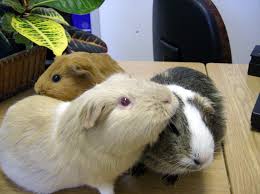
I've had the pleasure of visiting the most inspiring classroom on a regular basis this year. A class where 5 or 6 children usually had guinea pigs on their laps or at their desk while they were doing their school work. If you are intrigued read on as I interview a teacher I greatly admire... Janet Bathgate or Mrs. B as her class affectionately call her.
Firstly, how did you think of bringing guinea pigs into the classroom?
Mrs B: I wasn't sure about the guinea pigs at first. I was worried how much work it would be – but the teacher relieving in the classroom next door brought in two for a couple of days last year and some of the kids responded well. As well, last year one of the mother's brought in day old chicks and it was amazing how the kids responded to them. So I started off with little chickens initially.
Did you have any concerns about having animals in class?
Mrs B: I was worried that some of the kids had never picked up an animal smaller than a dog and didn’t know what to do. They were scared of these little birds. But I also discovered they were a great incentive to get work done. And then some of the more anxious students started to hold them and cuddle them and it was really positive. It was just they made a mess and they got too big quickly.
Then later the other teacher had guinea pigs for a couple of days and I thought I would give them a try this year. The mum with the chicks gave me the first two guinea pigs and I soon discovered that two divided between 20 kids was not enough.
The kids loved them! Although I was surprised how many of my kids would not hold them at first and were scared of them. But over time there reactions changed. They would proudly tell me that they had held the guinea pigs and hadn’t been scared and that was worth the effort.
I have never pushed any of the students to handle the guinea pigs and I think that is important. All my class are happy to handle them now and I even have kids from other classes coming down to pat them and see them. I have a couple of parents who bring their younger kids down to see them and ask if they can hold them. It has also taught them about caring and death as well as we have lost two this year.
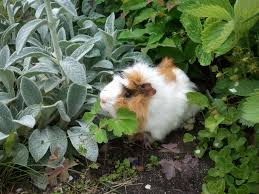
What are the positive impacts you notice within the class?
Mrs B: The children learnt to share with each other and take turns in a very real way. They would look after the guinea pigs and talk to other students (students they didn’t normally talk to) about them. They seemed to like cuddling them. They are very calming (non-threatening) and just sit there and let the children do most things. They have taught the kids empathy and emotional awareness. And they've helped in other unpredictable ways too. For example, most of my kids will happily share carrot with the guinea pigs now – even a child with a disability who is very particular about food now eats carrot.
Are there some types of children who seem to respond better? Are there any children who have difficulty with it?
Mrs B: At first I had students who weren’t too sure and they would reluctantly handle them or pat them but now everyone will pat them (including a child with a disability who at first would not let them near him) and cuddle them. The kids who suffered from anxiety are more relaxed and less anxious, partly because of the guinea pigs. The guinea pigs have helped them to feel safe having a go.
How do you manage the mess/hygiene side of it?
Mrs B: At first this was a problem. We used anti-bacterial wipes and lots of washing skirts or shorts with water. I saw a petting zoo in Cairns Central that had guinea pigs and they were being held in small baskets/trays. So I tried this and it has been great. We line the trays with paper towel, plonk the guinea pig in them with food and that is it. The guinea pigs will climb into the baskets now as they know that they are their safe place. When they have an accident, paper and mess get thrown into the compost tumbler outside the classroom. At lunchtime they go in the cage outside the classroom and sometimes the preppies get to have a nurse. Hay from the cage goes in the vegie garden (it is great fertiliser) or compost tumbler. We even grow food for the guinea pigs in the vegie garden at school, which the kids will try now as they know the guinea pigs eat it.
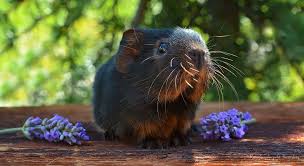
Do the children help with the responsibilities?
Mrs B: Most of the time they have to get the cage ready in the morning cut up the vegies (leave some carrot for the guinea pigs) and pack them up for me to take home. Some children are more into helping than others, but there is no pressure to be involved.
Have you had any negative responses?
Mrs B: I have had some responses from adults who are not happy with the guinea pigs, and I would love for them to understand the benefits of them. Also, my partner is not a fan but he sees it is for the kids and he sees that they are well treated at school, so he is accepting.
Do you think the benefits outweigh the effort?
Mrs B: Yes!!! Every time I think it is too hard I think of the smiles on a kid's face when they nurse and talk to the guinea pigs. Even the preppies love patting them and feeding them. They are so calming.
Well from my perspective as a visitor to this classroom, I've been so impressed by the positive atmosphere. The classroom literally feels different. Yes, it might not always look so highly structured and neat, and there might be squirming creatures in amongst the school work. But I can literally feel the positive vibes, something that feels akin to the feelings of love. It feels like a low stress classroom, and yet I know there are a number of children with significant needs in the class. We all know that a peaceful, joyful, low stress environment is a place where children love to be and can't help but do their best learning. And I have loved seeing it in action in this class...
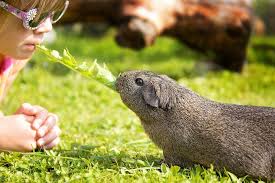
Three cheers for Mrs. B for thinking outside the square and for putting in an extraordinary effort for the children in her classroom!

